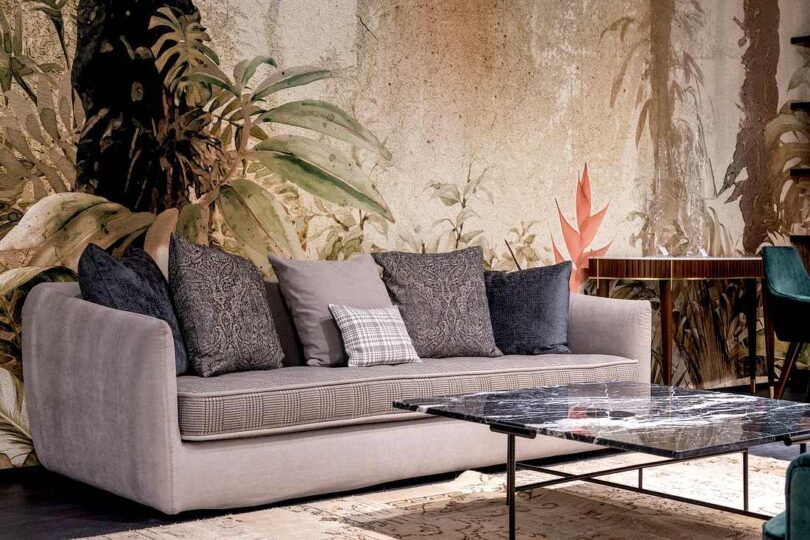Home decorators always have to make sure that their furniture and decorations work together harmoniously, but sometimes it can be difficult to do with so many different styles, colors, and patterns.
When designing your home, it is important to consider how patterns can fit in with everything. The wrong pattern in the wrong place can make any space feel hectic and crowded. There’s a good chance that you won’t be able to match your patterns, but you can use them to your advantage.
Here are seven tips for mixing patterns in your home decor.
1. Use similar or complementary colors
When trying to successfully incorporate patterns into your interior design, the first problem you’re going to run into is finding patterns with colors that match.
It is important to keep the color scheme consistent throughout the room. Otherwise, it will end up looking like several rooms combined into one, or a mix-and-match sale at a thrift store.
Using similar or complementary colors can create a cohesive and unified look in your home decor.
The patterns you choose can vary as widely as your imagination can go, but make sure that they follow the same general color scheme.
2. Mix in patterns of various sizes
It can be hard to determine the proper amount of pattern that will work in your home. To make things easier, use varying sizes.
For example, if you’re trying to decide between large patterns and small patterns, try mixing these two sizes together. It’s good practice to include some neutral colors in your mix as well like white or gray. This will provide some contrast, which we’ll talk more about later on.
Mixing patt erns of various sizes creates interest and depth.
3. Avoid using more than a few
Now that you know it’s okay to use multiple different patterns in your interior design, it can be easy to get carried away.
They might all be the same color, but your home might start looking more like a patterned home decor store if you’re not careful. That’s why it’s important to choose three or four patterns you really like, and stick with them.
If you absolutely need to have more than 3-4 different patterns (which we understand), try using different patterns of the same style.
Make sure your patterns follow a similar style, whether it’s Middle Eastern, Bohemian, or Contemporary.
4. Mix simple with complex
Contrast is one of the key factors you need to consider when designing your home’s interior.
You can create contrast by using complementary colors and varying the sizes of your patterns, but the best way to create contrast is by combining simple with complex.
For example, try contrasting a bold patterned wall with a simple rug (or vice versa).
If you’ve got a lot of patterns to work with already, you can create a unified look by white-washing the walls, and incorporating white in the sofas and furniture. Check out Cindy Crawford furniture reviews for neutral pieces that would go well with your decor.
5. Use a rug to tie your patterns together (or layer patterned rugs)
Of all the tips on this list, this is the easiest and most effective way to incorporate patterns and tie a room together.
A large patterned rug can act as an anchor for the rest of the room to hinge off of, or the invitation for more patterns to come into play.
Make a bold statement by layering patterned rugs. This can help bring some life into an otherwise sterile room. Just make sure the patterns work well together!
To find the perfect patterned rug for your interior design, or to learn more about how everyone can appreciate a luxury rug, head over to Lawrence of La Brea.
6. Create a visual balance
As you know, contrast is an important thing to consider when incorporating patterns into your interior design. That’s because when used well, contrast creates visual balance.
Solid colors help to break up the chaos of too many patterns in one place, so make sure you mix them in —as long as they still match your color scheme!
7. Avoid using too many prints
Prints are an inexpensive way to spice up your interior design, but the room can start to look tacky if you have too many prints in one area.
So hold off on that fourteenth kitten print if you’re trying to spruce things up with patterns.
In Conclusion
There are plenty of problems you can run into when using patterns to decorate your home’s interior, but if you follow these tips, you’ll be enjoying a new and welcoming space in no time.
Photo by Max Vakhtbovych








